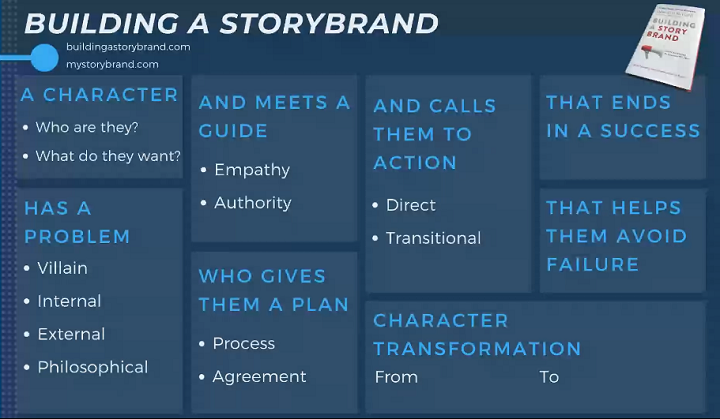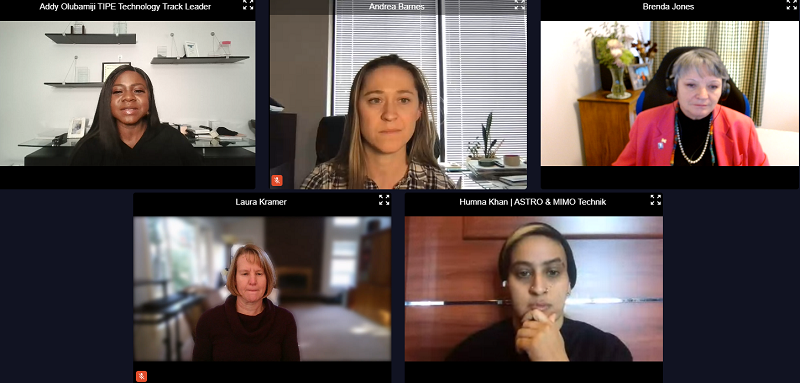After successful events in 2021 and 2022, nonprofit Women in 3D Printing (Wi3DP) recently hosted its third Technology, Industry, People, and Economics (TIPE) virtual summit. With four tracks of relevant content, and a first-time co-producer in SME, the global event featured more than 180 female speakers talking about the many ways 3D printing is used, from automotive and construction applications to the medical industry and much more. In addition to 50 sponsors and 15 hiring companies at the virtual career fair on the last day, preliminary numbers show that over 2,000 delegates attended TIPE 2023, myself included.
The Value of Technical Storytelling: AM Won’t Sell Itself
Presented by Ellen Williams, Chief Development Officer at Exum Instruments, the first talk I attended focused on the best way to sell 3D printing to those who haven’t adopted it yet.
“We have to take this highly complex product and distill it into this good story to drive business decisions,” Williams explained.
She explained that Exum developed a scientific instrument that can measure the chemistry of solid materials, and then shared a helpful framework she learned in a book about marketing called “Building a StoryBrand.” Every good story starts with a main character, or a hero, who has to deal with a villain or villainized problem; in the case of 3D printing, this could be wasting material or fear of adopting a new technology. The hero meets a guide, who expresses empathy for the hero’s problem but also shows authority, so the hero trusts the guide when they offer a plan to overcome their problem. As Williams explained, the exciting part of the story is the call to action from the guide, which ends in success that allows the hero to avoid failure.
Who doesn’t want to be the hero of their, or their company’s, own story, right? But Williams went on to explain that we in the AM industry aren’t the heroes—we’re the guides. We are essentially Yoda, teaching companies why, and how to, use our technology. In Exum’s story, the company developed a mass spectrometer that, while able to measure the chemistry of solid materials, is fairly complicated.
“So I don’t lead with that,” Williams said. “Instead of talking about all the complexities of this innovative product, we tell a story.”
In selling its story, Exum talks about the materials scientists in the AM industry who need to check the chemistry of feedstock but require multiple instruments to do so, which they don’t want to learn to use, or hire a chemist to use. So they’ll send samples to outside labs for a lot of money, wait weeks for results, and so on and so forth.
“Exum can express empathy because we’ve used it all, we get how difficult it is,” Williams said. “We also express authority – check out the results we’re getting and compare them to traditional ones. Then let’s talk about a plan.”
The bottom line: channel Yoda when you’re trying to sell your equipment and technologies to companies that might be a bit wary about trying something new. Tell the story of why the product you’re offering can help them successfully defeat their villainous problem.
Factors Affecting AM Product Quality
If you’re selling 3D printing through storytelling, the quality of the products the technology can fabricate had better be high enough to be worth any potential risk. As Andrea Barnes, Director of Quality Management for Big Metal Additive, said, customer confidence and trust that 3D printing can deliver products reliably, with the necessary specifications, is a “critical component” in further adoption of AM as a viable manufacturing technology.
Technology Track Leader Addy Olubamiji, a career coach and Founder of the STEMHub Foundation, mentioned that the quality users are looking for often differs from industry to industry. Humna Khan, the CEO and Founder of ASTRO Mechanical Testing Laboratory, explained that components going into space “are at a more critical level in terms of requirements” than many others. Because they need traceability, specific and very strict standards must be followed by every single supplier; even a small satellite part could require 20-30 different standards.
In reference to polymers, Laura Kramer, Materials R&D Manager for 3D Systems, said we’re “ultimately” talking about the quality of the finished product, and if it fits the needs of the industry. Materials have to go through a lot of stages, including cleaning, curing, supports removal, sanding, and other finishing processes, on their way to becoming a final product, and Kramer said that quality needs to be top of mind every step of the way. There needs to be good process control when making the materials themselves, and that focus on quality has to remain when ensuring materials are stable while being transported and stored before use. Plus, the 3D printing process itself has a lot of variables that could affect quality, such as orientation of the printed object and exposure time, so users have to make sure that the material also works well with the printer itself.
“Once we’ve controlled these factors, there are differences from printer to printer, and you need to be able to ensure reproducible parts,” she said.
“The process needs to be customized for every resin—one size does not fit all.”
Olubamiji asked Brenda Jones, the CEO of Ulendo, why she believes adoption of AM is slow, and Jones said that while there are many reasons, “we focus on vibration.” If an FDM printer is operated at too high of a speed, it vibrates, which causes issues and wastes a lot of time and materials. Jones said many end users use a lot of trial and error when trying to determine the fastest speed a printer can operate without causing these quality issues, which is a pretty inefficient solution. That’s why she said that a lot of small and medium-size businesses say that additive is “just not in the cards in terms of ROI” with quality issues like vibration.
Additive Manufacturing Education
Let’s say you do decide that you’re interested in adopting additive—now you need someone who understands the technology. The skills gap is still a big issue in the industry, as we heard in a panel about AM education. There are some specific populations that have a gap in educational opportunities for AM, including people, as Amber Andreaco, Materials & Process Section Leader at GE Additive, explained, who have been working with traditional manufacturing methods for a long time. She explained that because some manufacturers and engineers don’t know much about additive, they aren’t comfortable signing off on reviews for designs and products that use the technology.
“We internally had to build out that knowledge base and find ways to educate people, retrain their mind,” Andreaco explained.
Emily Young, Education and Workforce Development Coordinator for America Makes, also noted a gap in AM educational opportunities for people trying to get back into a career pathway, like the recently incarcerated.
“We’re missing out on a pocket of the workforce ready to learn something new,” she said.
When asked about specific populations they’ve targeted, Young talked about building on programs in the K-12 space that help inspire youth to consider careers in engineering, such as letting students with friends toward meeting a common project goal, or inviting parents in for special events. Andreaco mentioned a K-12 school that started an all-girls 3D printing club, which grew from a teacher starting an open student club and realizing that not many girls were joining.
“It’s just that awkward age where they weren’t comfortable with the boys, so she started an all-girls one,” she explained. “The teacher worked with us, so one of us went every week and asked the girls what they were working on, and we offered our history and feedback.”
Allison Beese, Associate Professor of Materials Science and Engineering at Penn State, talked about educating graduate students of all ages, using both in-person and remote options, and encouraging interaction between the students with team projects, as “having discussions among peers is really important for learning.” In terms of additive-specific skillsets for which more educational resources are needed, Beese brought up data management science, because “tons of data” is collected in additive, and it would be helpful to learn about the sorts of data streams available.
In addition to these seeming externalities to production 3D printing, TIPE 2023 was replete with information about real-world use cases of AM, which I will discuss in greater detail in a follow-up article. Stay tuned!
Subscribe to Our Email Newsletter
Stay up-to-date on all the latest news from the 3D printing industry and receive information and offers from third party vendors.
You May Also Like
Gorilla Sports GE’s First 3D Printed Titanium Cast
How do you help a gorilla with a broken arm? Sounds like the start of a bad joke a zookeeper might tell, but it’s an actual dilemma recently faced by...
Nylon 3D Printed Parts Made More Functional with Coatings & Colors
Parts 3D printed from polyamide (PA, Nylon) 12 using powder bed fusion (PBF) are a mainstay in the additive manufacturing (AM) industry. While post-finishing processes have improved the porosity of...
$25M to Back Sintavia’s Largest Expansion of Metal 3D Printing Capacity Since 2019
Sintavia, the digital manufacturing company specializing in mission-critical parts for strategic sectors, announced a $25 million investment to increase its production capacity, the largest expansion to its operations since 2019....
Velo3D Initiates Public Offering in a Bid to Strengthen Financial Foundations and Drive Future Growth
Velo3D (NYSE: VLD) has been among a number of publicly traded 3D printing firms that have attempted to weather the current macroeconomic climate. After posting a challenging financial report for 2023,...




































